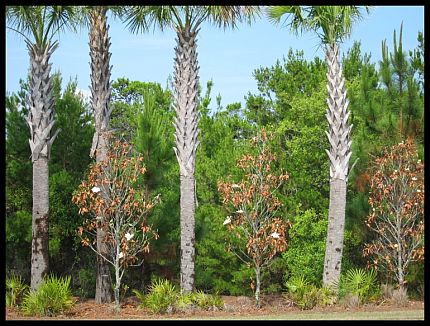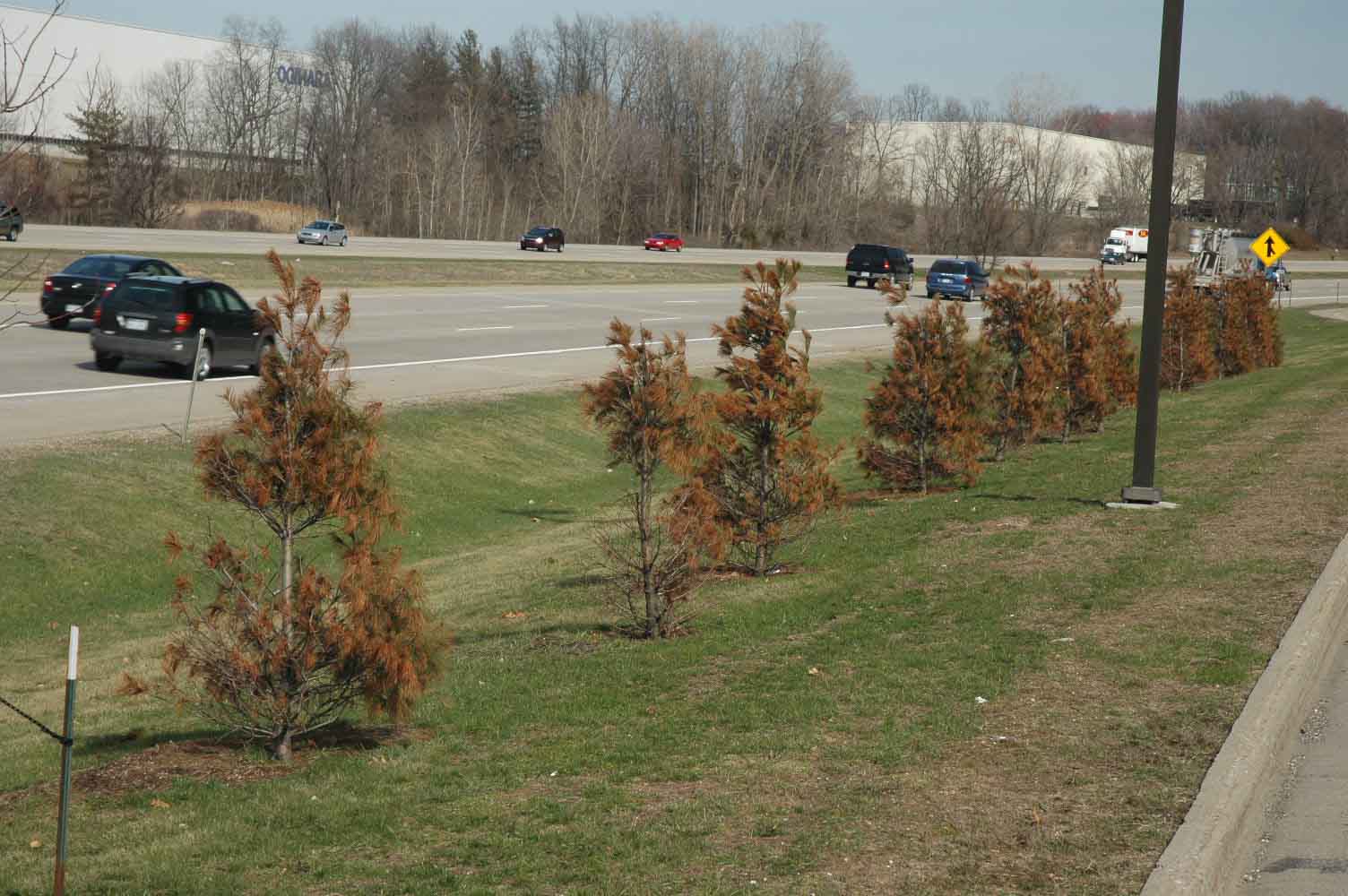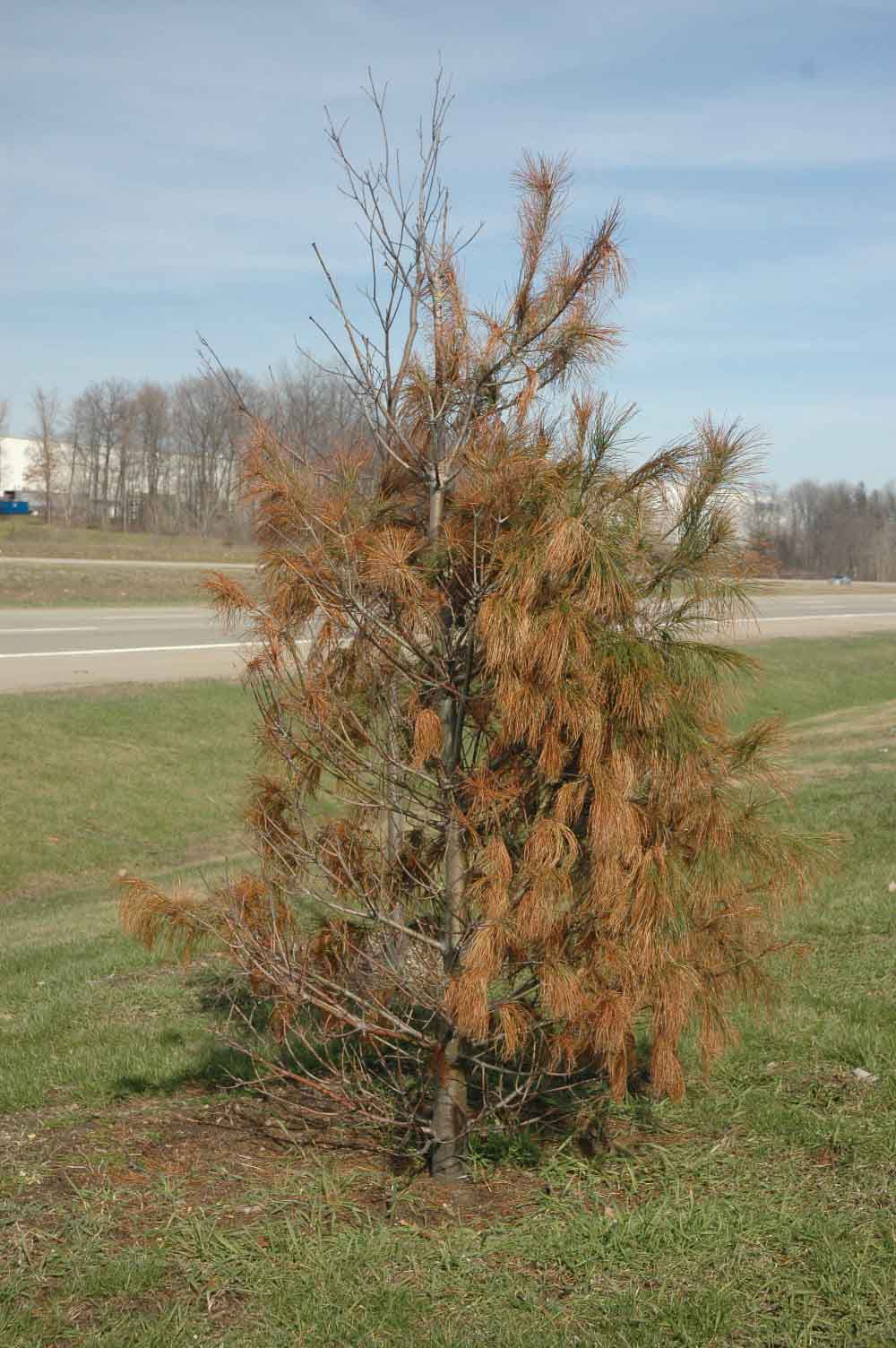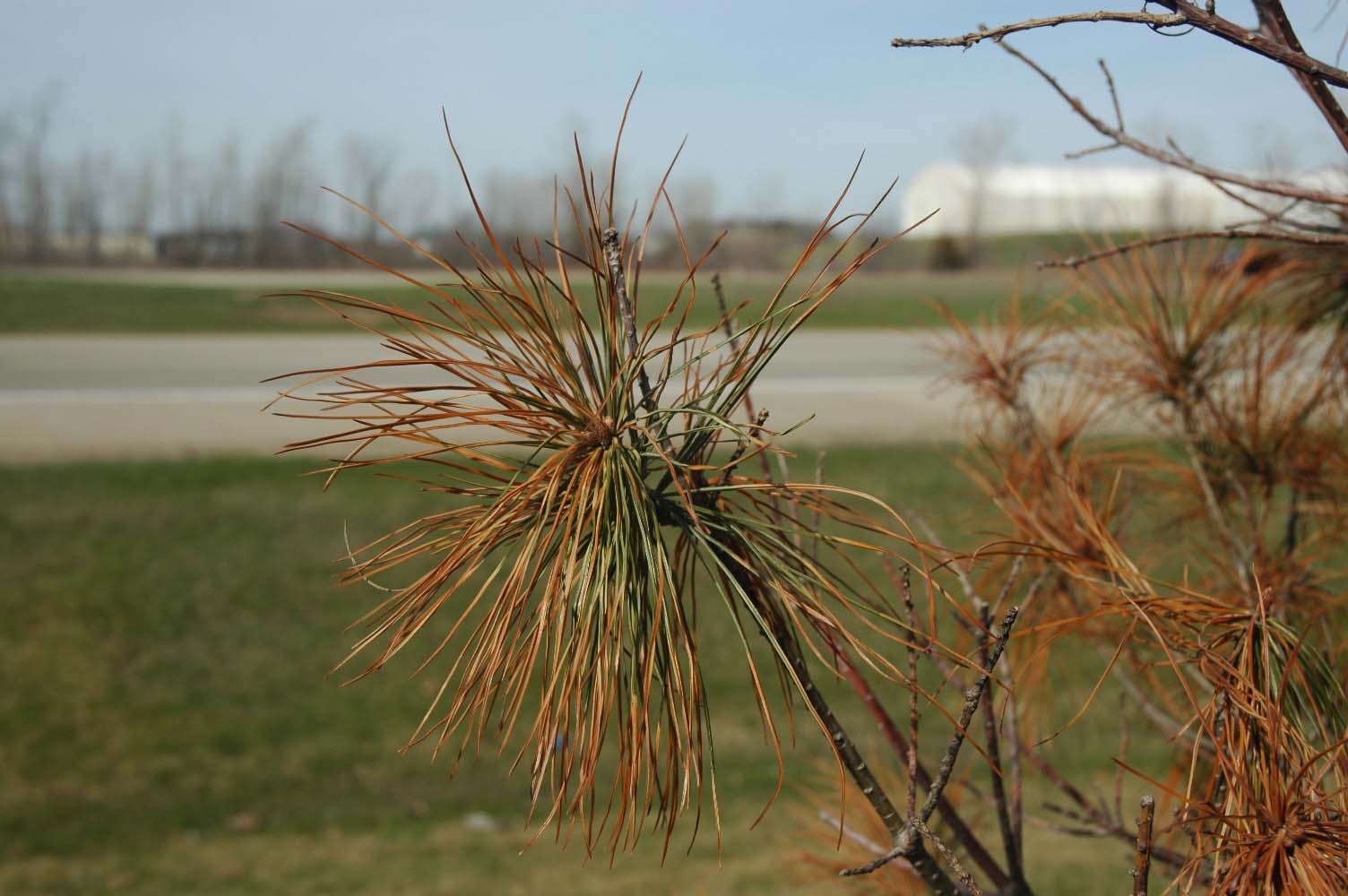Last week I posted about some horticultural disasters I witnessed in the Czech Republic. This week the chamber of horrors is little closer to home; virtually in my back yard to be specific. Our property backs up to US 127, the main North-South through route in our area. It’s a limited access highway with a posted speed of 70 mph, which means an average speed of 82.7 mph. It also means the road is regularly salted whenever it snows during the winter. As a result, some plants along the highway really take a beating, sometimes with some interesting results.
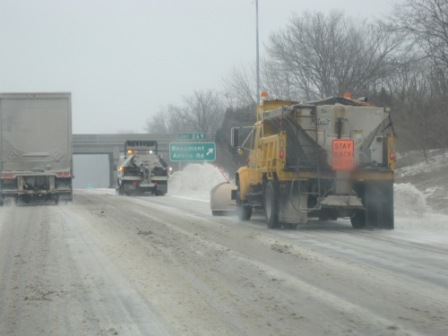
On Friday I received an email from Susan Gruber, our Undergraduate Advisor, who also commutes on US 127. “Hey Bert, Have you seen the pear trees on the east side of NB 127 just south of the Round Lake Road (and Price Rd) exits? Street side fried, shows up great with flowers on the other side. Also same trees planted at the same time doing great by the ramps, farther from the road, slower traffic, some up on the berms etc. Make great GP fodder, but I didn’t have a decent camera or the guts to pull over and do phone photos in rush hour.”
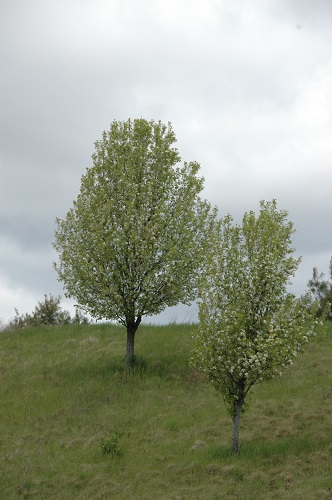
Unaffected pears upslope and away from salt exposure
Indeed I had seen the trees. As Susan noted, the sides of the trees facing the highway were fried, the opposite sides were in full bloom. I got a few photos over the weekend but the effect was a little less striking than earlier in the week when the trees had blooms but hadn’t begun the leaf out.
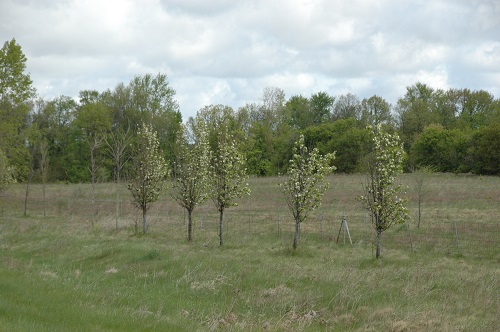
Pear trees in the line of fire
The planting illustrates a classic example of wrong tree-wrong place. Interestingly there are several crabapples that were installed as part of the same planting project that seem to be doing well. Selecting trees for exposure to deicing salt is a dicey proposition since, like this example, most of our information is anecdotal. Where the effects of deicing salt on plants have been systematically examined, the studies may focus on only soil exposure or only aerial deposition; whereas trees in the real world get it with both barrels.

Eastern white pine after one winter at a rest area along I-96 east of Lansing. An ideal proving ground for salt tolerant plants.
Ironically a colleague of mine in our department and I put together a proposal several years ago for our state Department of Transportation (MDOT) to identify salt tolerant plants for roadside plantings. Our plan was to install a series of replicated plantings of perennials (trees, shrubs, herbaceous perennials) at highway rest areas throughout the state. We would then correlate plant performance with degree salt exposure and identify plants that could survive, grow and maintain their aesthetic value under the highest salt loads. Initial discussions were positive until the proposal worked its way up the chain of command. Finally it was determined – I am not making this up – that MDOT could not participate in a project on indentifying plants that were tolerant of deicing salts because that means they would have to admit that salt was causing a problem. OK; just don’t tell the trees on US 127…

In our studies we rate plants on a scale of 1 (alive) to 5 (dead). These are class 4 (wish they were dead…)
